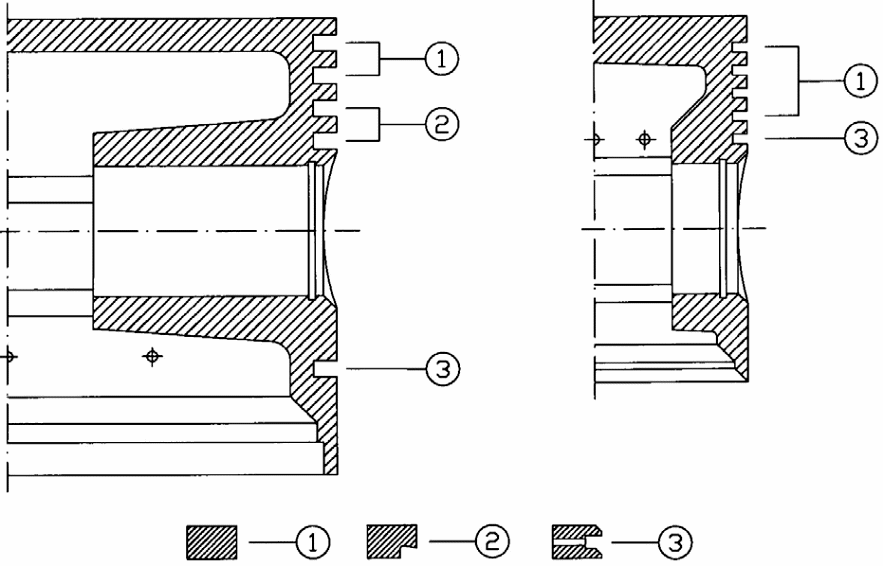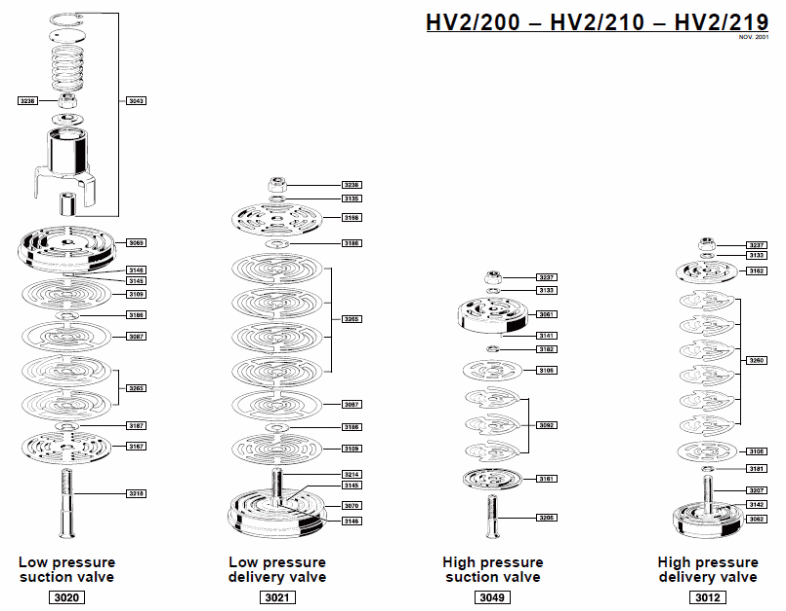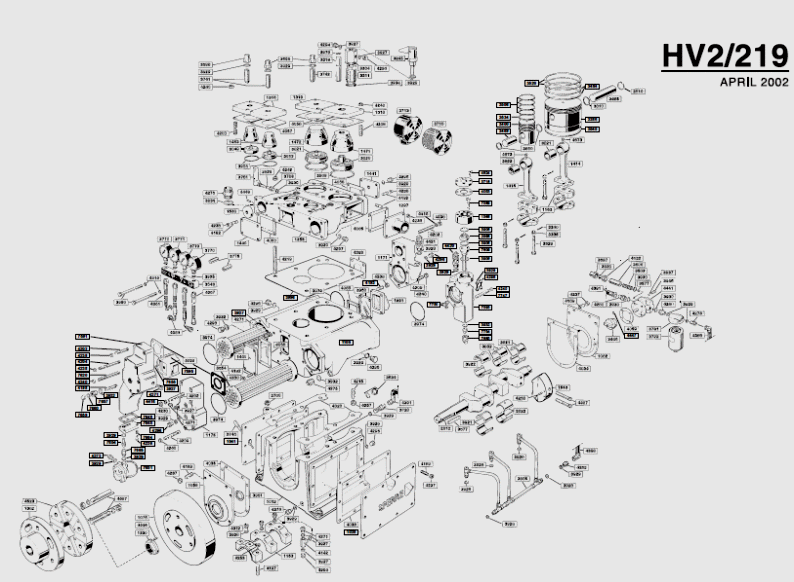
- •1. Personal safety
- •2. About the compressor
- •2.1 Construction
- •2.2 Safety equipment
- •Important: The safety valves, bursting disc and any other safety equipment must be inspected regularly.
- •3. Installation and operation
- •3.1 Installation instructions
- •3.2 Cooling water system
- •3.3 Start-up
- •3.4 Operation
- •3.5 Stopping
- •4. Operational failures
- •Important: When inspecting the valves, loosen the clamp bolt on the valve cover before removing the cover.
- •Valve overhaul and maintenance
- •5.3 Lubrication system
- •5.4 Bearings
- •5.5 Pistons and piston rings
- •5.7 Coolers
- •5.8 Filters
5.4 Bearings
The compressor crankshaft is fitted with replaceable, two-piece sleeve bearings. The central frame bearing also controls movement of the shaft in the axial direction.
The crosshead bearings are one-piece sleeve bearings which are pressed into the connecting rods. Tolerances and clearances for the crankshaft, frame and crosshead bearings are set out in Table 6.4.
All the sleeve bearings are pressure lubricated.
Following inspection or replacement of the crankshaft or frame bearings, it is important to ensure that the bearing bushes do not pinch the crankshaft. It should be possible to turn over the compressor by hand.
New two-piece bearings are treated with a running-in coating.
Assembling a crosshead bearing liner on a connecting rod:
A Remove old liner using a hydraulic press or puller.
B Push in new liner.
C After assembly of the bearing bush, a hole must be drilled for the oil supply and locking screw.
Drill diameter: 6.8 mm.
D The hole for the locking screw must have M8 thread.
 Fig. 5.1
Assembling crosshead bearing liner
Fig. 5.1
Assembling crosshead bearing liner
5.5 Pistons and piston rings
To disassemble a piston:
LP piston
A Remove all cooler covers except the cover for the air outlet.
B Remove the cylinder cover. (It is not necessary to remove the valves.)
C Loosen the crankshaft bearing bolts and remove the crankshaft housing.
D Extract the piston and connecting rod from cylinder.
HP piston
A Loosen the crankshaft bearing bolts and remove the crankshaft bearing housing.
B Rotate the crank pin to the bottom and remove the connecting rod and piston through the crank case.
Reassemble in the reverse order.
Important: It is very important to protect the crank pins, since even minor damage may necessitate replacement of the crankshaft. Therefore, always wrap a cloth around the exposed crank pins while working in the crankcase.


Fig. 5.2 Piston rings
5.7 Coolers
It is important for correct operation of the compressor that the LP and HP coolers are kept clean of coke deposits and other deposits from the cooling water. Inadequate cooling will result in a higher temperature of the compressed air, which will cause the progressive formation of coke.
The pipes are attached to the plates at each end of the coolers by rolling.
The seals in the ends of the coolers are of O-ring type of special quality, and only original O-rings shall be used.
To remove the pipes, first loosen the cooler covers at both ends. The entire pipe assembly can now be removed with the aid of two control rods which are pushed through the pipes. Reassembly takes place in the reverse order.
When the pipe assembly is removed, care must be taken to ensure that the locating surfaces of the O-rings are not scratched. Any such scratches which may occur can be removed with fine emery powder.
All seals and O-rings must be renewed after the cooler cover has been removed from the compressor.
If the cooler pipes show any signs of corrosion or wear, they should be replaced.
5.8 Filters
The air filter is cleaned using a high quality degreasing agent. Clean the filter with compressed air and apply a thin layer of compressor oil.
The oil filter should be replaced as a single unit. The recommended replacement interval is every 1000 operating hours.


